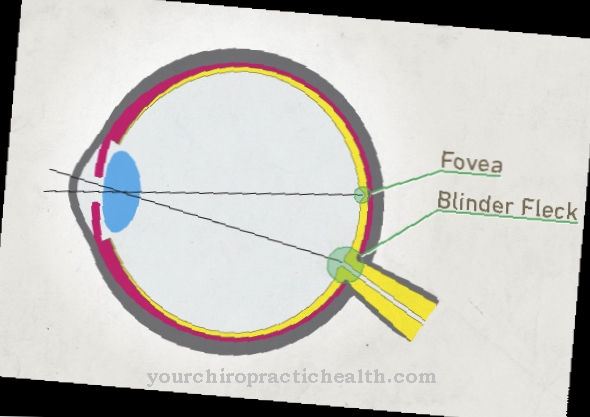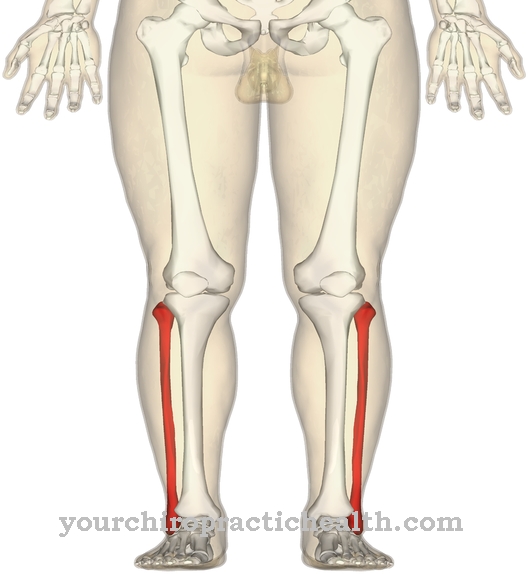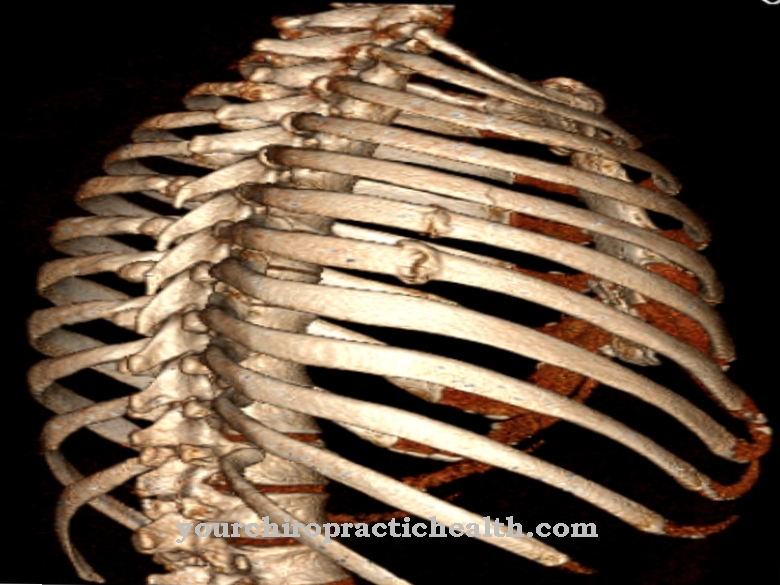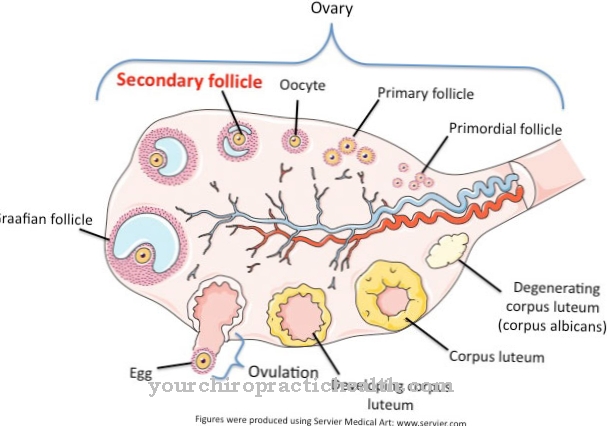Stretch receptors measure the tension in the tissue and thus detect the stretching of a muscle or organ. Its main task is to protect against overstretching, which is guaranteed by the monosynaptic stretch reflex. The stretch receptors can show structural changes in the context of various muscle diseases.
What are stretch receptors?
Receptors are proteins found in human tissue. They react to certain stimuli in their environment with depolarization and convert the stimulus impulse into a bioelectrical action potential.
Receptors are therefore the target molecules of a body cell and belong to the signaling devices of the organs or organ systems. The so-called mechanoreceptors react to mechanical stimuli from the environment and make them processable for the central nervous system. The proprioreceptors are primary sensory cells and belong to the mechanoreceptors. They are mainly responsible for the body's self-perception and correspond to free nerve endings.
The receptors of the muscle spindle fall into the group of proprioreceptors. These sensory cells play a role primarily for the monosynaptic stretch reflex and are accordingly also called stretch receptors. Muscle spindles are therefore stretch receptors in the skeletal muscles that respond to mechanical stretching. They measure the muscle length and enable differentiated and reflective movements. The Ruffini and Vater-Pacini bodies interact with the stretch receptors in the joint capsule.
Anatomy & structure
The muscle spindles are located in the skeletal muscles. They are made up of intrafusal muscle fibers. These fibers lie parallel to those of the skeletal muscles.
Nuclear chain fibers consist of cell nuclei arranged like a chain. Nuclear sac fibers are a collection of distended cell nuclei. All muscle spindles are made up of five to ten striated muscle fibers in a connective tissue sheath. In humans, the spindles are between one and three millimeters long. The spindles are found in various locations in the body. For example, up to a thousand muscle spindles that can reach a length of almost ten millimeters are located on the muscle fibers of the leg extensor in the thigh. The more muscle spindles, the finer the associated muscle can move.
In the non-contractile center of the muscle spindles, there are mainly afferent-sensitive nerve fibers that serve to absorb stimuli. These fibers are also known as Ia fibers. They wrap around the middle sections of the intrafusal fibers and are also called the anulospiral endings. The efferent nerve fibers of the muscle spindle are so-called gamma neurons that control the sensitivity of the spindle.
Function & tasks
Stretch receptors primarily protect muscles and organs from stretch damage. To do this, they trigger the monosynaptic stretch reflex, which reflexively moves the associated muscle against the direction of stretch. This reflex reaction must take place as soon as possible after the stretch. The afferents of the muscle spindle run almost exclusively via the fast-conducting nerve fibers of type Ia and are monosynaptically connected via the spinal cord.
Any other connection would delay the protective reflexes of the stretch receptors. Class II nerve fibers permanently record the muscle length. They are part of the secondary innervation. The action potential frequency in the Ia fibers is always proportional to the measured muscle length or tissue tension. The frequency of the action potential is also related to the speed of change in length due to stretching. Because of these relationships, muscle spindles are also called PD sensors. A change in length of the muscle activates the alpha motor neuron of the stretched muscle and at the same time activates the gamma motor neuron. The fibers of the working muscles shorten parallel to the intrafusal fibers. In this way the sensitivity of the spindle is constant.
When a muscle is stretched, the stretch also reaches the muscle spindle. The Ia fibers then generate an action potential and transport it via the spinal nerve into the posterior horn of the spinal cord. The impulse of the stretch receptors is projected monosynaptically onto α-motor neurons via a synapse connection in the anterior horn of the spinal cord. They let the skeletal muscle fibers of the stretched muscle contract briefly. The muscle length is also controlled via the γ-spindle loop. The intrafusal muscle fibers are networked with γ motor neurons at the contractile ends.
When these motor neurons are activated, the muscle spindle ends contract and the middle is stretched. The Ia fibers thus generate an action potential again. After passing through the spinal cord, a contraction of the skeletal muscle fibers is triggered, which relaxes the muscle spindle. The process continues until the Ia fibers do not detect any stretch.
You can find your medication here
➔ Medicines for muscle weaknessDiseases
Diseases based on muscle spindle alteration are not yet known. Due to their complexity as a receptor organ, such diseases are quite likely.
In the context of peripheral neuropathies, enlargements or aplasias of the spinal ganglion cells or of the medullary and sensitive nerve fibers occur. These phenomena could influence the development of the stretch receptors. The lack of a certain transcription factor can also have negative effects on the development of the stretch receptors. Demyelinating forms of neuropathy, on the other hand, are not associated with alterations of the muscle spindles.
The muscle spindle can also suffer from specific muscle diseases and thus show morphological changes. This especially includes neurogenic muscular atrophy. Muscular atrophy is characterized by a decrease in the size of the skeletal muscles and is a response to decreased stress. In the neurogenic form of muscle atrophy, the reduced stress is caused by the nervous system or certain neurons and can thus occur, for example, in the context of the degenerative disease ALS.
The fine tissue of the muscle spindles changes thread-like when the muscles are atrophied. Many other diseases change the muscle spindles. The fine-tissue structure of the stretch receptors and their diseases have not yet been researched very well because they are very complex.
























.jpg)



